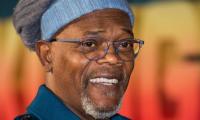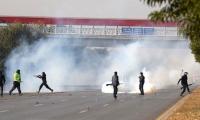The writer is a group director at the Jang Group.
Make too many promises and sooner rather than later a government will find that all can’t be kept. This is especially true as far as economic policy is concerned where one is keenly reminded that some stakeholder objectives have to be forgone in pursuit of some other aim. Thus, high levels of spending on physical infrastructure or on social development programmes to stimulate the economy will usually result in inflation unless the economy is in a deep recession and has plenty of productive capacity or has sufficient foreign currency to finance a spate of imports.
In an attempt to arrest the increase in the current account deficit, the State Bank of Pakistan (SBP) recently increased the policy rate to 7.25 percent. However, the rate hike is unlikely to mitigate inflationary pressures as the inflation we are experiencing is not only due to excess aggregate demand but also on account of supply side cost push pressures.
A major drawback of increasing interest rates is the extra burden it places on the government of Pakistan’s debt servicing obligations since the increase in the SBP’s policy rate cascades throughout the economy including on the federal government’s saving schemes.
The current account balance is in the red to the tune of $5.4 billion in the first eight months of 2021 alone This contrasts with a slight but positive current account balance of $245 million in 2020. Last year’s surplus is however an aberration; it reflects depressed industrial activity in the world economy on account of Covid-19 that caused a fall in commodity prices particularly that of crude oil.
The perennial problem with our trade balance is the wide gap between exports and imports of goods and services even after we eliminate the imports of crude oil.
The saving grace for the current account continues to be workers’ remittances that reached an all-time high of almost $26 billion in 2020 – a growth rate of 17 percent over 2019. In 2021, remittances have already exceeded $20.5 billion in the first eight months of 2021 so we may well have an all-time annual record inflow of around $27 billion by the end of this year.
Depending primarily on remittances to cover the trade gap is a risky proposition, however, because of the ongoing political and economic undercurrents. According to the International Labour Organization (ILO), Covid-19 has resulted in the loss of over 114 million jobs worldwide in 2020. Also telling is that many of the jobs lost during the current pandemic are gone permanently as host countries switch to robotics and automation to replace unskilled labour or impose tighter restrictions on cross-border workers’ movement because of the populist backlash against migrants.
The outflow of dollars to Afghanistan coupled with the endemic trade deficit means further depreciation of the rupee is to be expected even though the SBP governor in a recent media briefing tried to put a positive spin on the negative trade gap as a reflection of greater investment in plant and machinery auguring a period of faster growth in Pakistan’s GDP. This is the same type of disingenuous response (otherwise why the new restrictions on automobile financing by banks?) that has often been used when policymakers wish to deflect tough questions about the direction of the economy. One is reminded of the situation in Lewis Carroll’s ‘Through the Looking Glass’ when a befuddled Alice finds that she is stuck in the same spot despite running as fast as she can. The Red Queen’s arch response is that Alice’s attempts to move forward are futile if she only runs as fast as she can. To get somewhere else she needs to run at least twice as fast as that!
As announced recently by the SBP, quantitative measures such as tightening lending conditions for car loans by banks is an appropriate corrective measure to slow down the growing trade gap. Assembling cars locally has a significant foreign exchange requirement because components and parts have to be imported by domestic producers. Foreign exchange is also used for the additional oil imported to meet oil refiners’ petrol production for the growth in car numbers. Add to this the negative impact on the current account due to repatriation of profits by the car companies and the need for curbs on car purchases is clear.
Indeed, the state of congestion on the roads of the major cities and the fact that our urban areas rank among the world’s worst in terms of air quality that lead to higher health costs and mortality in the population provides a sound rationale for curtailing air pollution through a system of emissions permits for car companies. (Other polluting sectors like cement and power generation can be dealt with later under a ‘cap and trade’ system).
Pollution permits mean higher prices for car owners driving huge petrol guzzlers, but this would be counterbalanced by lower prices for smaller, more fuel efficient vehicles. This would also boost the prospects of electric vehicle ownership in this country
A momentous implication of climate change is that changing patterns in worldwide food production are going to result in seismic shifts in the geopolitical landscape. Countries that have or acquire food exporting capabilities will find that their importance has grown manifold in international geopolitical terms. To put it bluntly, food crops will be the new oil.
One area in need of immediate intervention in Pakistan is enhanced production of oil seeds and edible oils that could lead to reduced dependence on their imports that cost the country over $3 billion annually. Surprisingly, very little has been achieved in oilseeds and edible oil self-sufficiency despite several major studies and recommendations on this sector by international and local consultants dating back to the mid-1980s. Indeed, the great surge in the annual import expenditure for these products is a direct result of a massive increase in the country’s population coupled with a fall in production of traditional sources of edible oils such as cottonseed as the area devoted to cotton production decreases.
Our planners are fixated on promoting large-scale manufacturing even though after more than 70 years of disappointments it is apparent that Pakistan lacks a comparative advantage in large-scale industry, which survives largely because it has been coddled through a combination of protectionist barriers and a profusion of tax rebates and subsidies. Consumers pay for the high cost of inefficiency.
It is mystifying to note that recently excise duty and sales tax reductions were allowed on parts imports for car production whereas taxes on personal computers and laptops were increased. Given their importance to the digital economy and to remote and hybrid learning in schools and universities, there should be zero taxes and duties on imports of laptops and PCs whose dollar prices have already shot up due to a shortage of microprocessors globally.
The digital economy is one area that Pakistan does have a comparative advantage in as evidenced by the fact that we are earning millions of dollars, despite an attitude of benign neglect by the authorities, through IT related services to international customers. What is noteworthy is that much of this development has come about through bootstrapping efforts whereby our youth have learnt their craft through self-help initiatives by accessing free resources on the internet such as YouTube videos. The government needs to facilitate their efforts by expanding the broadband footprint to all corners of the country. Hopefully, a million digital flowers will bloom as a result.
Email: iqbal.hussain@janggroup. com.pk
Most SOEs such as PIA, may have a negative net worth too, based on their earnings potential
Fortunately, after a decade’s struggle with smog, Pakistani Punjab has understood the urgency of climate action
Recent COP29 summit underscored several emerging opportunities in global climate action
Rapid industrialisation of nations blurred once-clear lines between ‘developed’ and ‘developing’
Analysis of registered candidates reveals that many come from 15 districts affected by floods, poverty and poor...
US-Pakistan relations need to steer clear of the global power competition that dominates geopolitical landscape







